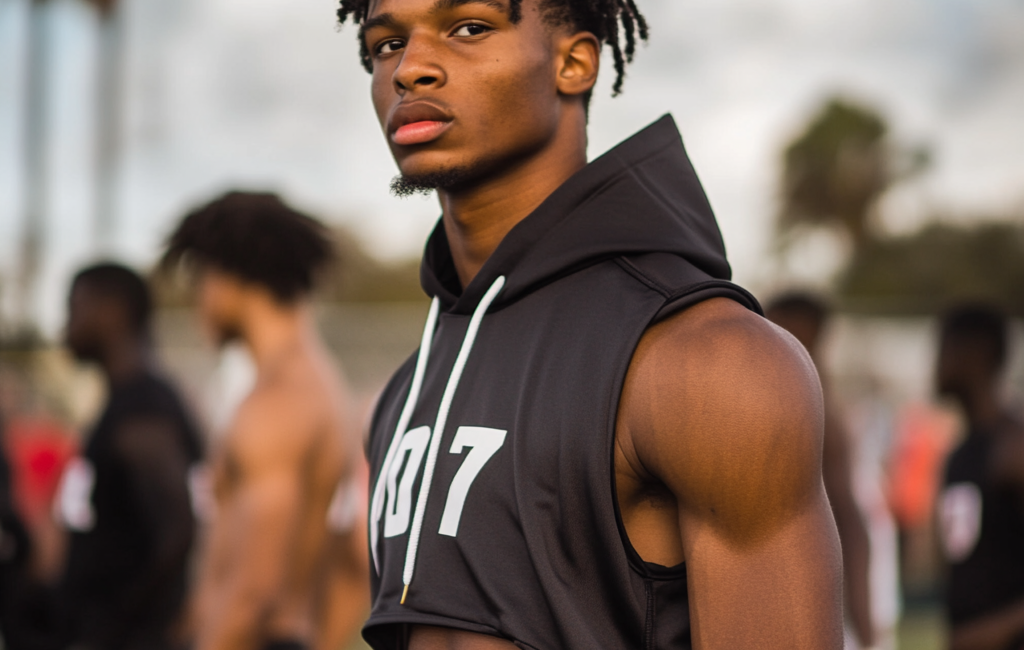By Bill Prentice Senior Sports Reporter
Under the bright lights of a pristine turf field in Dallas, Texas, hundreds of college scouts watch intently as elite high school quarterbacks launch perfect spirals to receivers running precise routes. This isn’t Friday night football – it’s a Tuesday in March, and it’s the new normal in the world of football recruitment.
Welcome to the 7-on-7 circuit, where off-season has become prime time.
The New Pipeline
“Ten years ago, this was just a way to stay sharp in the spring,” says M. Johnson, founder of Elite 7v7 Programs. “Now? It’s practically mandatory if you want to play Division I football.” Johnson isn’t exaggerating. Last year, 87% of Power 5 conference skill position recruits participated in organized 7-on-7 programs.
More Than Just Practice
Today’s 7-on-7 landscape bears little resemblance to its humble beginnings. Modern programs feature:
- Professional-grade video analysis
- Specialized position coaching
- College-style playbooks
- National tournament circuits
- Real-time recruiting exposure
- Social media content creation teams
The Price of Poker
The financial investment can be staggering. Top programs charge anywhere from $3,000 to $10,000 for a full season, not including travel expenses for national tournaments. Yet parents consistently make the investment, viewing it as essential for college recruitment.
“You have to see it as an investment in their future,” explains Maria Rodriguez, whose son Tony plays for Texas Premier 7v7. “The exposure these kids get in one tournament can equal a whole season of Friday night games.”
The College Connection
College coaches have embraced the 7-on-7 circuit as a way of using it as a evaluation tool. “It gives us a perfect look at a player’s football IQ, athletic ability, and competitive nature,” says veteran college recruiter Mr. Thompson. “We can see how they handle pressure, how they read defenses, how they adjust – all in a controlled environment.”
The Technology Edge
Modern 7-on-7 programs have evolved far beyond basic passing drills. Programs now utilize:
- GPS tracking for player movement
- Advanced metrics analysis
- Virtual reality training systems
- Real-time performance data
- Digital playbook integration
The Controversy
Not everyone celebrates this evolution. Some high school coaches worry about the impact on traditional team development. “These kids are getting pulled in too many directions,” warns veteran high school Coach Martinez. “They’re learning different systems, different terminology, and sometimes that creates confusion.”
The Future
The 7-on-7 industry shows no signs of slowing down. With the advent of NIL deals reaching high school athletes, many programs are now incorporating brand development and social media training into their offerings.
Finding Balance
The key to success in this new landscape isn’t just participating – it’s participating intelligently. Athletes need structured training that complements their school programs while preventing burnout and injury.
RepMax Services has developed a comprehensive approach to supporting 7-on-7 athletes with:
- Position-specific strength training
- Recovery protocols
- Speed development programs
- Injury prevention training
- Performance nutrition plans
Are you ready to elevate your game on the 7-on-7 circuit while maintaining peak performance for your school team? How can you ensure you’re getting the most out of both worlds without risking burnout?
burnout?
Let RepMax Services design a program that helps you excel in both arenas. Contact us today for a personalized evaluation and learn how we can help you navigate the demands of year-round football.
About the Author: Bill Prentice specializes in covering the evolution of youth football and the changing landscape of athletic recruitment.
